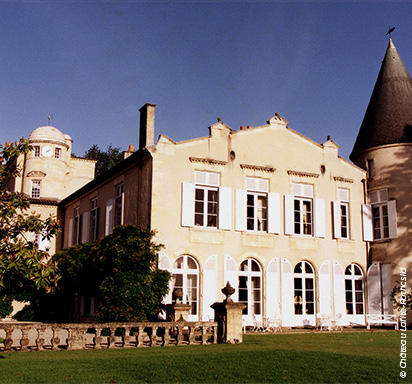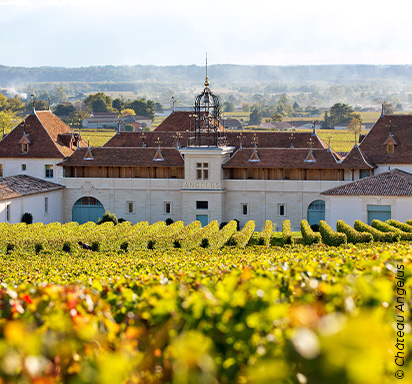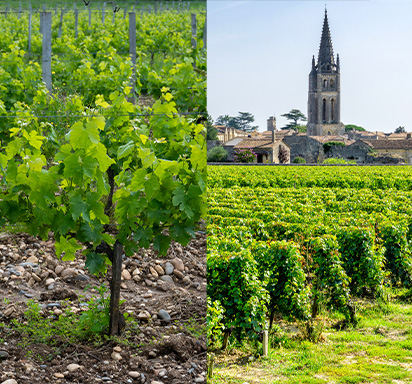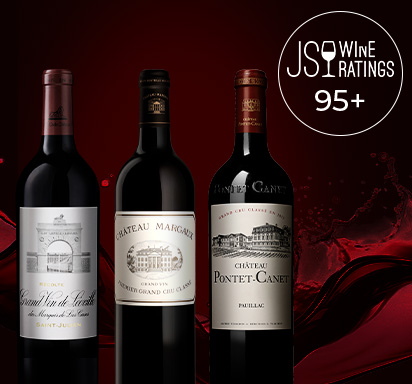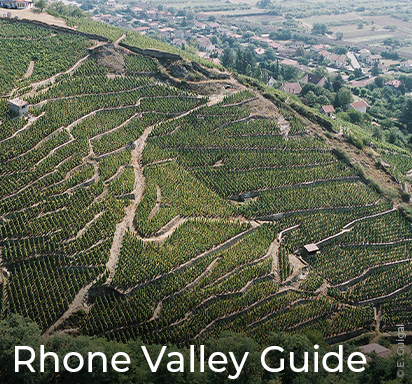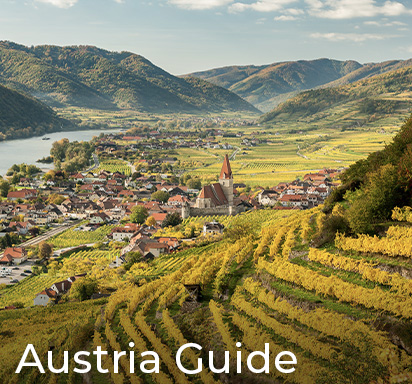A guide to Bordeaux wines: How to choose the best Bordeaux wine?
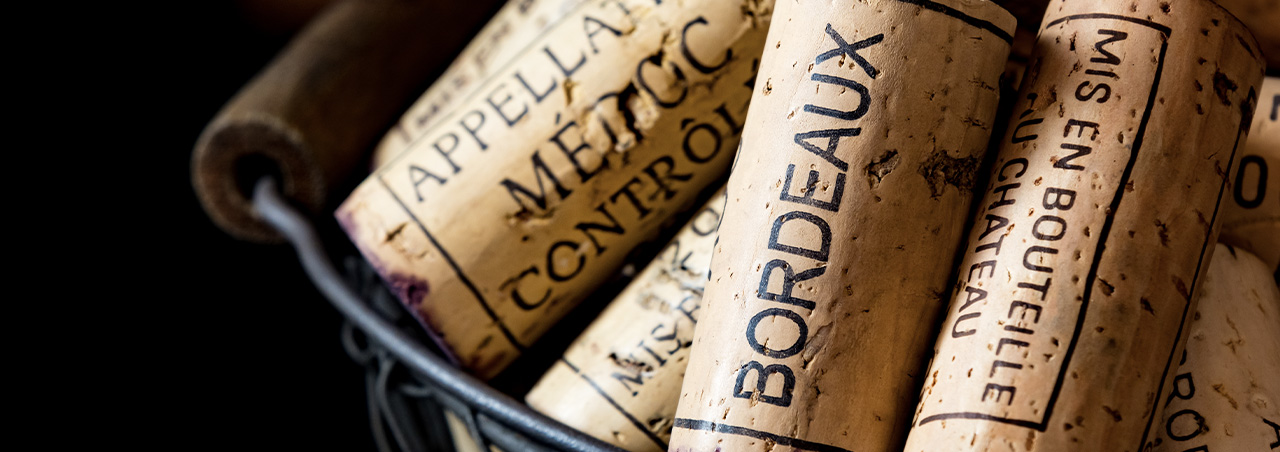
Bordeaux wines are synonymous with excellence in the wine world. We will help you to decipher which Bordeaux wine is best for you and let you in on what to look out for in what feels like an abundance of Bordeaux wines.
A guide to Bordeaux wines: How to choose the best Bordeaux wine?
Bordeaux wines are synonymous with excellence in the wine world. In this guide, we will help you to decipher which Bordeaux wine is best for you and let you in on what to look out for in what feels like an abundance of Bordeaux wines. We will run you through the different appellations, their characteristics, the different classification levels, food and wine pairings and more! Enjoy!
A Benchmark in the wine world and the iconic Bordeaux Blend
Rooted in the southwest of France, Bordeaux is home to some of the most illustrious estates and appellations. The vineyards of the Bordeaux wine region enjoy a moderate climate and are planted in gravel, sand, limestone and clay soils. The vines spread across close to 118,000 hectares. If you would like to know more about the Bordeaux region, discover all there is to know about Bordeaux wines here!
Making up the iconic Bordeaux blend are five iconic grape varieties: Cabernet Sauvignon, Merlot, Cabernet Franc, Malbec and Petit Verdot for the red wines, sometimes supplemented by Carmenere. Sauvignon Blanc, Muscadelle and Semillon are the typical Bordeaux white varietals that are included in the white wines.
Left-Bank and Right-Bank Bordeaux wines: What is the difference?
Left-Bank wines: Médoc and Graves
Located on the Left Bank of the Gironde Estuary, the wines stemming from each appellation boast a unique style.
A sub-region in the north of the Left Bank
Within the Médoc sub-region, one can find many appellations such as Margaux, Moulis, Listrac-Médoc, Saint-Julien, Pauillac, Saint-Estèphe, Médoc and Haut-Médoc.
Indeed, each appellation enjoys a different climate, soil formation, altitude, sun exposure and the list goes on. Thus, the grapes planted in these appellations offer a very different expression in the bottle and interestingly provide a different take on each winemaking year, aka the vintage. Medoc wines are powerful, silky, well-balanced and bursting with flavors.
Graves in the south of the Left Bank
Renowned for its gravelly soils, the Graves region comprises many well-known appellations such as Pessac-Leognan, and Graves. Nearly two-thirds of the wines produced in the Graves region are red wines. The red wines stemming from Graves are structured, smooth and aromatic. The white wines, comprising Sauvignon Blanc, Semillon and Muscadelle, exude floral aromas along with citrus fruit notes.
Sauternes and Barsac, the cradle of sweet white wine
In Sauternes and Barsac, located in the south of the Graves region, the botrytized Sauvignon Blanc and Semillon grape varieties give rise to some of the most exquisite sweet white wines. The unique climate in Sauternes and Barsac is conducive to the growth of the infamous and adored noble rot, a natural phenomenon that is essential to the making of fine Sauternes and Barsac sweet wines.
The Right Bank of the Bordeaux region
Libournais, home to some iconic right-bank appellations
Giving rise to Merlot-dominant red wines, the Libournais area on the right bank of the Bordeaux region is home to some illustrious Bordeaux appellations, namely, Pomerol and Saint-Emilion. The wines stemming from these red clay soils give rise to fruity and softer red wines, made from Merlot, Cabernet Franc and Cabernet Sauvignon. Due to the dominance of the Merlot varietal, these wines exude the characteristic aromas of their grape varieties. Thus, right bank wines are a perfect introduction to Bordeaux wines. Discover our range of Pomerol wines here!
Bordeaux white wines, dry and sweet
Rooted in between two rivers, the Garonne and the Dordogne, the white wines from this part of Bordeaux pair beautifully with your summertime feasts as they exude notes of citrus fruit and express a pleasant acidity.
Ranking system of Bordeaux wines
The Official 1855 Bordeaux Classification
Prior to the Universal Exposition in Paris, held in 1889, the Emperor of France, Napoleon III was eager to showcase the excellence of French savoir-faire. Napoleon requested a ranking system, comprising first to fifth growths and featuring the finest estates in the Médoc region. Some examples are, Chateau Margaux, Chateau Ducru-Beaucaillou, Chateau d'Yquem, Chateau Palmer and more. This ranking system guarantees the quality of these estates and their wines, either First or Second Labels, so if you ever see First Growth (Premier Cru Classé) to Fifth Growth (Cinquième Cru Classé), you're sure to be in for a treat.
Cru Bourgeois Classification
The Cru Bourgeois Classification system was created in 1932 and was a way to shine a light on lesser-known and smaller Médoc estates. Over the years, Cru Bourgeois wines have beamed beyond the French borders due to their remarkable price-to-quality ratio. Medoc, Haut-Medoc, Listrac-Medoc, Saint-Julien, Moulis-en-Medoc, Pauillac, Margaux and Saint-Estephe are the eight appellations that comprise Cru Bourgeois-Classified estates. Within the classification system, there are three levels: Crus Bourgeois, Crus Bourgeois Supérieurs and Crus Bourgeois Exceptionnels.
Classification of Saint-Emilion
With the first edition harking back to 1955, the most recent Saint-Emilion Classification lists 85 estates in total, comprising: 2 Premiers Grands Crus Classés A, 12 Premiers Grands Crus Classés and 71 Grands Crus Classés. Louis XIV himself stated the wines from this area as ''Nectar of the Gods'' and the quality of these wines has not wavered since his reign. Saint-Emilion wines are a must for all wine lovers.
Graves wine Classification
Established in 1953 and approved by the Minister of Agriculture that same year, this new ranking system was created to showcase the high quality of Graves wines, as they were not included in the other Bordeaux classifications. Comprising red and white wines from the finest Graves estates, 16 crus classes are located within the Pessac-Leognan appellation, on the Left Bank of Bordeaux.
Investing in Bordeaux wines: Which vintage is best?
Have you heard of Wine Futures? Find out all there is to know about this highly-anticipated yearly campaign and find out why wine lovers buy Futures here.
Vintners throughout the world devote their expertise and energy into guiding the vines. A factor that is out of their hands and that can either be beneficial or on the contrary, destructive is the weather. Also called the 'climate' within the wine world. Year in, year out, it is fascinating to see how the vines deal with sometimes unprecedented weather conditions. When it comes to investing in fine Bordeaux wines that you wish to cellar for many years to come, it is crucial to research the unique characteristics of each vintage. Some Bordeaux vintages that have gone down in history are 2009, 2010, 2016, 2019 & 2022.
Looking for tips on how to store your wines at home? Read our article here.
Food and Bordeaux pairing
The Eiffel Tower, Versailles, fashion, iconic museums... France boasts a rich history and the French way of life beams beyond borders. Having mastered the art of gourmet cuisine, it comes as no surprise that Bordeaux wines pair so beautifully with food. Due to the tannic structure of Left-Bank Bordeaux wines, we would recommend pairing the wine with rich, fatty foods, such as meats (chicken, lamb, duck, steak...). These foods offset and soften the tannins. Seafood and fish will also complement Bordeaux wines, such as lobster, langoustines or tuna. Serve the meat or fish with a side of grilled vegetables such as new potatoes and treat yourself to a delicious food and wine pairing experience. Bordeaux dry white wines will pair beautifully with chicken, pasta dishes, oysters, and creamy food. Sweet white wines from Sauternes and Barsac are renowned for matching with foie gras, Italian cheeses such as pecorino and parmesan.
There are no specific rules when it comes to food and wine pairing, we recommend being adventurous and creative!
You may like
Explore Château Lafite-Rothschild, an icon of Pauillac and a symbol of Bordeaux perfection. From its 17th-century roots to its refined terroir, learn how this Premier Grand Cru continues to define fine wine excellence.
10/7/2025Chateau Angelus, one of Saint-Emilion’s top Premier Grand Cru Classe A estates, offers exceptional Bordeaux wines from organic vineyards, rich history, and a legacy of family winemaking excellence.
10/6/2025The exceptional concentration of top-tier wineries and renowned appellations has long made Bordeaux a place of longing for fine wine enthusiasts and discerning hedonists around the world.
4/18/2025During his recent visit to Bordeaux, the famous American wine critic, James Suckling, toured the vineyards to rediscover the 2022 vintage: discover James Suckling's new ratings in this article!
2/19/2025Discover the Rhône Valley, a haven for wine lovers! Explore its storied terroirs, iconic appellations, and diverse grape varieties like Syrah, Grenache, and Viognier. Unveil wines to savor and cherish!
1/21/2025In this Guide, discover Austria’s top wine regions, grape varieties like Grüner Veltliner and Riesling, and some exquisite food pairings. Find out more on Austrian wines and why you should add them to your cellar.
1/14/2025








